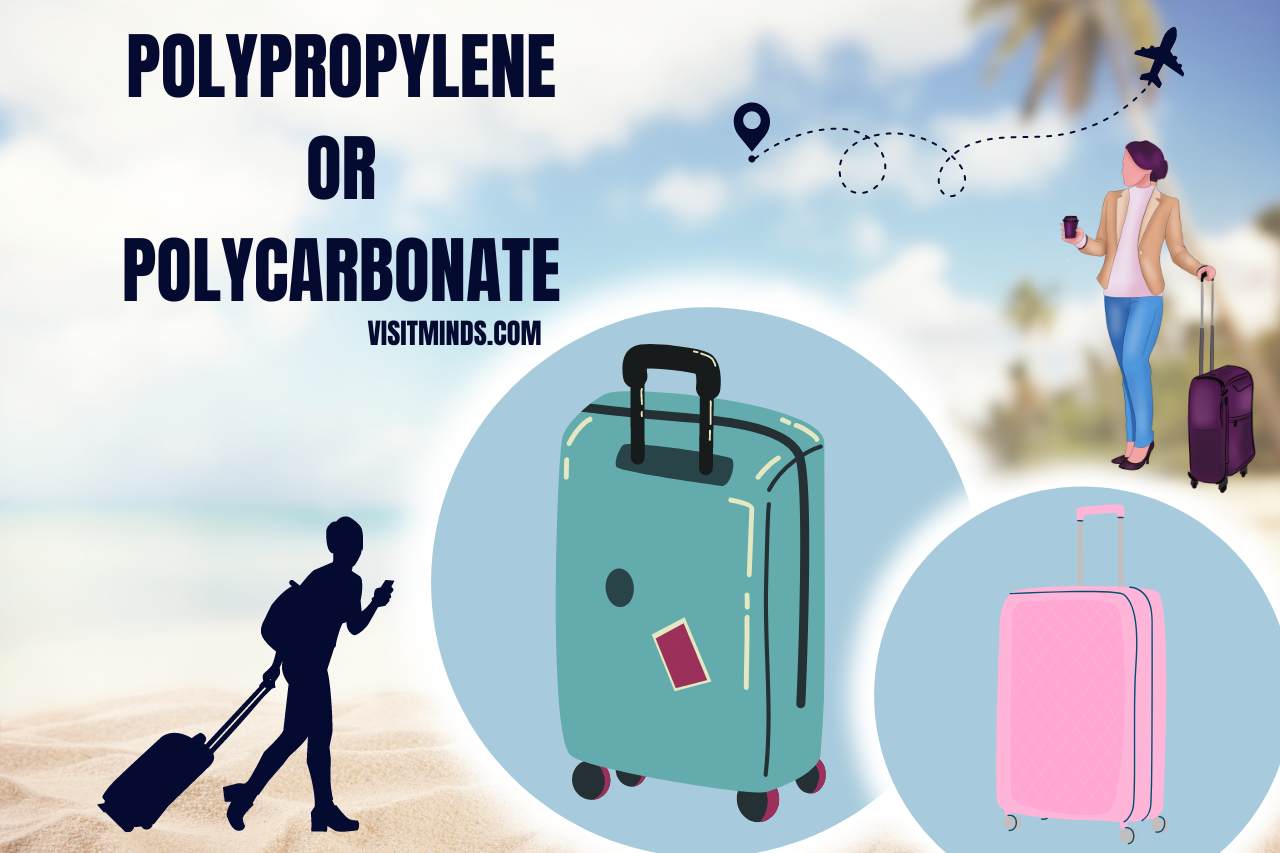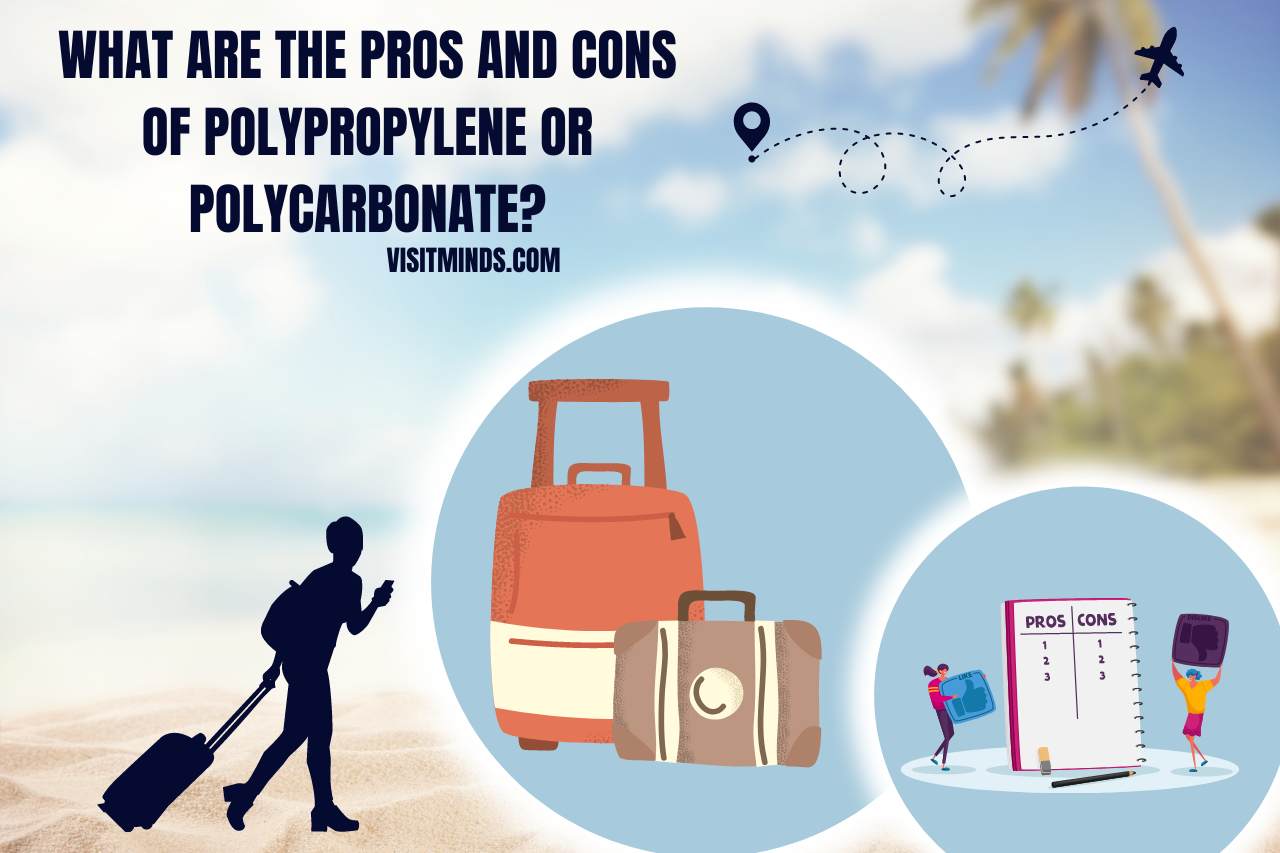Polypropylene or Polycarbonate – Making the Right Material Choice!
Whether searching for sturdy yet lightweight baggage for your travels or looking for data on the best material for your product designs, this article will provide you with the knowledge you need to make the best choice. Let’s investigate the worlds of polypropylene and polycarbonate to discover their particular characteristics and choose which material best satisfies your requirements.
What is the Difference Between Polypropylene and Polycarbonate Luggage?
Compared to polypropylene, polycarbonate is often more authoritarian and more impact-resistant. It is appropriate for regular travelers or people who want to give their goods the most protection possible because of its increased durability and capacity to endure complicated treatment.
When it comes to baggage, polypropylene is frequently lighter than polycarbonate, making it a popular option. Polypropylene baggage can be better if you’re worried about airline weight constraints or prefer more effortless movement.
Comparatively speaking, polypropylene baggage is more flexible than polycarbonate. This flexibility improves impact absorption and lessens the likelihood of cracking or breaking. But with time, this elasticity might lead to some distortion or scuffing.
Which Material Offers Better Durability: Polypropylene or Polycarbonate?
- Polycarbonate is a sturdy material option for baggage because of its excellent impact resistance. It is durable and resistant to crushing forces, drops, collisions, and inappropriate handling. It provides superior security for your possessions by being less prone to cracking or breaking under pressure.
- Although it is a sturdy substance, polypropylene is typically not as strong as polycarbonate
Regardless of the material chosen, reinforcements like reinforced corners or extra layers can increase the longevity of luggage.
Which Type of Luggage is Best for Travel: Polypropylene or Polycarbonate?
Polypropylene is typically lighter than polycarbonate if you prioritize lightweight luggage. This may be useful if you frequently travel with weight limits or desire more excellent maneuverability.
In comparison to polypropylene, polycarbonate offers superior overall durability and impact resistance. Polycarbonate luggage is often considered a solid and robust solution that can endure inappropriate handling or safeguard fragile belongings. Because polypropylene baggage is more flexible, it can absorb impacts more effectively and decrease the likelihood of splitting or shattering.
This elasticity may cause minor distortion or scuffing over time. Since polycarbonate luggage typically resists scratches better, it looks better with time. Polycarbonate is preferable if your luggage is clear of noticeable scrapes or scuffs.
What Factors should I Consider When Choosing between Polypropylene or Polycarbonate?
- If you value lightweight luggage, polypropylene is typically lighter than polycarbonate.
- When compared to polypropylene, polycarbonate is noted to have greater strength and impact resistance. Polycarbonate is frequently recommended if you want a highly sturdy solution that can endure severe handling or protect sensitive things.
- Polypropylene baggage offers more flexibility, which might result in improved impact absorption. Polypropylene can work if you want something more elastic and durable. However, please remember that it can become more susceptible to distortion or scratching over time.
- Polycarbonate is generally more resistant to scratches and keeps its elegant appearance even after frequent use. Polycarbonate is typically a better choice to keep any noticeable scratches or scuffs off your luggage.
- More design flexibility is provided by polycarbonate, including the potential for transparent or translucent suitcase alternatives. Most polypropylene luggage is solid in color and might look more industrial. Think about your aesthetic preferences and whether you value design options.
- Luggage made of polypropylene is typically less expensive than polycarbonate. Polypropylene baggage can be a good option if your budget is tight if you don’t need the maximum level of impact protection.
Take into account your travel preferences, frequency, and locations. Prioritizing durability may be crucial for frequently visiting places with rugged terrain or handling. Conversely, polypropylene can be a better alternative if you value lightweight options or have certain weight constraints.
What are the Pros and Cons of Polypropylene or Polycarbonate?
Polypropylene Pros:
- Polypropylene is often less heavy than polycarbonate, which makes it simpler to move and transport.
- Because polypropylene is more flexible, it can withstand impacts without breaking.
- When compared to polycarbonate solutions, polypropylene luggage is frequently less expensive.
- Polypropylene has a high level of chemical resistance, making it appropriate for use in various industrial and specialty applications.
Polypropylene Cons:
- Polypropylene is more likely to crack or break when subjected to strong forces since it is often less impact-resistant than polycarbonate.
- Fewer design options are available for polypropylene baggage, which often comes in plain colors and may look more utilitarian.
Polycarbonate Pros:
- Polycarbonate is solid and can endure severe treatment, making it ideal for frequent travelers or people who want to provide their goods with the best possible protection.
- Excellent impact resistance provided by polycarbonate lowers the possibility of breaking or shattering even when subjected to heavy force.
- Luggage made of polycarbonate typically has superior scratch resistance, keeping its clean appearance over time.
- With polycarbonate, greater design versatility is possible thanks to its transparent or translucent properties and a more incredible selection of colors and patterns.
Polycarbonate Cons:
- Polypropylene baggage is typically lighter than polycarbonate luggage, so individuals concerned about weight constraints or prefer lightweight options may want to consider this.
- Compared to polypropylene, polycarbonate baggage is typically more expensive, reflecting its higher durability and design flexibility.
FAQ
Does Polycarbonate Luggage Crack?
The baggage made of polycarbonate is made to endure normal handling and impacts that occur while traveling. It can take light to moderate force without cracking and has high impact resistance.
However, compelling consequences, like being dropped from a considerable height or under pressure, could result in cracks.
The robustness of polycarbonate can be affected by extreme temperature conditions. Even though it often resists temperature changes, exposure to extremely low temperatures followed by an immediate impact or bending could make breaking more likely.
Similarly, prolonged exposure to high temperatures may cause the material to soften and become more brittle.
Can I Repair Deep Cracks in My Polycarbonate Luggage?
Fixing deep cracks in polycarbonate baggage might be challenging, especially if the damage is severe. It can be difficult to recover the strength and appearance of polycarbonate if it develops deep cracks because it is a robust and inflexible material.
After properly cleaning the cracked area, fill the break with a small amount of epoxy glue. Follow the manufacturer’s directions for curing it. Although it might not restore the strength of the suitcase, this procedure can help stabilize the break and stop it from spreading.
You can reinforce the fractured region with solid adhesive tapes, such as duct or packing tape if the crack is minor and has little impact on the luggage’s structural integrity. This can hold the luggage together and help stop further damage.
Which Luggage is Suitable for Frequent Travelers?
Choose baggage made of durable materials that can survive the rigors of regular travel, including high-quality nylon or polycarbonate.
To ensure durability, look for edges that have been strengthened, strong zippers, and sturdy handles. Choose lightweight luggage to make traveling through airports, train stations, and other places more accessible. You can stay inside airline weight restrictions by using lighter luggage.
Think about the best suitcase sizes for various lengths of travel. Rapid and effective travel is possible with a carry-on size that meets airline requirements without the need to check bags. For lengthier journeys, a giant checked bag can hold more stuff.
Watch this video,
Video Credits – Just Dhruvvv
You May Also Like
- Traveling Light: A Visual Guide to 50 Pounds of Luggage
- Can You Pack Soda in Checked Luggage? – All You Need to Know
- Do Cans Explode in Checked Luggage? Safe Travel Tips!
- Can I Use a Box for Checked Luggage? Unconventional Travel Tip!

Hi there, I’m Chathuranga, a travel enthusiast, web developer, and the chief editor of Visitminds.com. Traveling around the world, and experiencing different types of cultures, hotels, and destinations is my passion and I will put my best foot forward to share my knowledge on Visitminds.com via exciting blog posts to make you a pro traveler. Let’s do this!




![Are Rain Boots Good for Snow? [Don’t Get Caught Out]](https://visitminds.com/wp-content/uploads/2022/11/are-rain-boots-good-for-snow-768x512.jpg)



